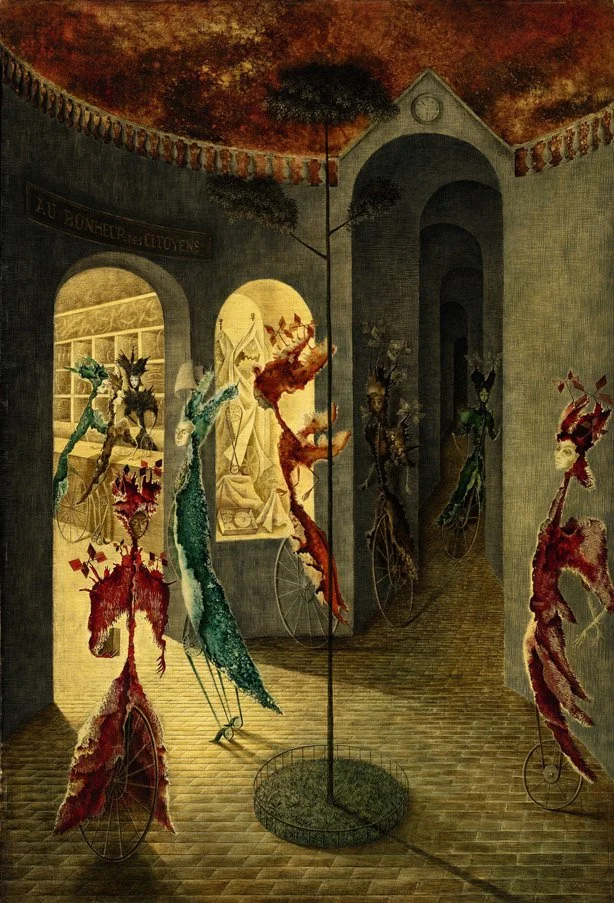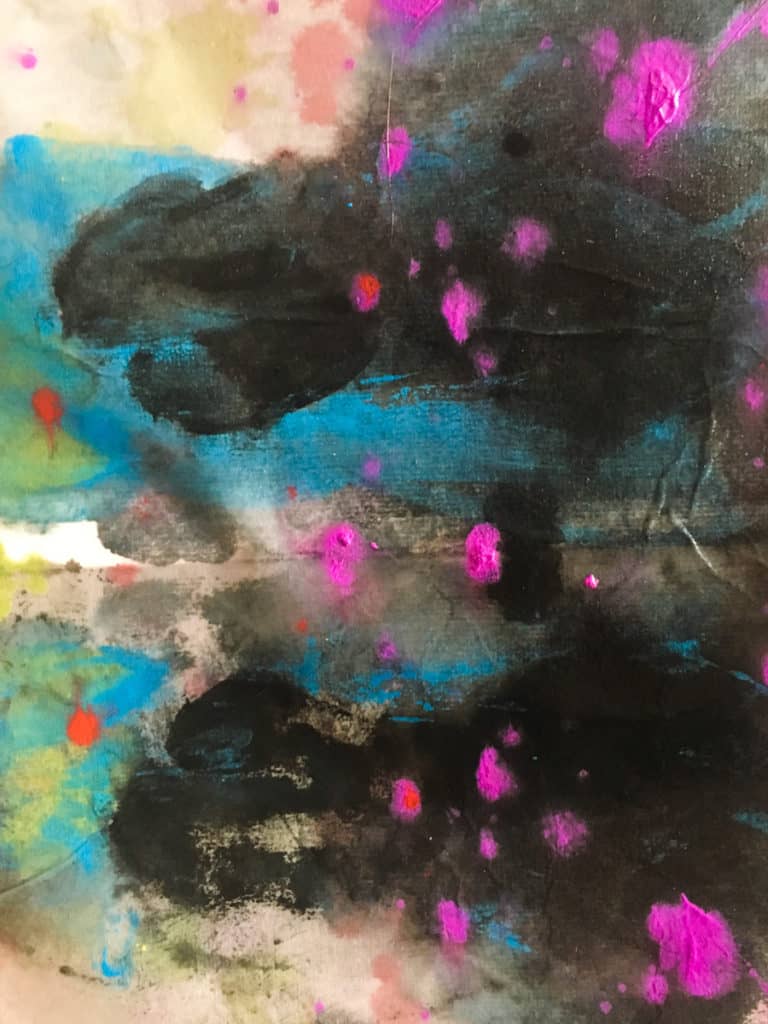What is Decalcomania?
A Decalcomania is a kind of painting created by pressing a thin layer of wet paint between two surfaces. It can be done by folding papers in half, like in this lesson, or by picking up wet paint from a smooth surface (such as glass ) with paper or canvas.
Decalcomania and Surrealism

One of the most famous artists to use this technique is Spanish Surrealist painter Oscar Dominguez, who referred to his works as “decalcomania with no preconceived object”.
He would spread thin layers of gouache on paper or glass, and then proceed to squeeze it on to the canvas.
Play Like a Surrealist: 13 Surrealist Games and Techniques to Unleash Kids Creativity
Max Ernst and Remedios Varo also used Decalcomania technique to develop new textures in their painting.

Decalcomania Painting Art Exploration
Materials for exploration:
- Paper (I use Xuan Paper)
- A selection of Gouache or acrylic paint
- Large soft brushes
- Tray for mixing colors
- Water buckets
Materials for Cleaning up
- Cloth or Paper towels
- Old newspaper
- Drying Rack
Decalcomania Examples:
- André Breton, Untitled, 1935
- Oscar Dominguez, Untitled, 1935-36
- Marcel Jean, Untitled (Woman’s Profile), 1936
- Marcel Jean, Untitled, 1936
- Yves Tanguy, Untitled, 1936
- Max Ernst, Alice in 1941, 1941
- Oscar Dominguez, Untitled, 1936-37
Set up the studio
Cover the table with old newspaper and set up each station with paper and a color tray filled with a selection of paint. 4-5 colors should suffice, including black.
Set a water bucket with brushes every three-four students.
Prepare one station for the teacher to demo the lesson.
Set up space on the wall to hang the paintings for kids to identify shapes.
Art Exploration Process
Start the lesson by showing students examples of Decalcomania paintings. Ask them what they see in the paintings.
Ask them about shapes and colors.

How to create a decalcomania:
Fold a paper in half and place some paint along the inner crease.
With the paint still wet, close the paper and press gently with your hands.
Open the paper to see the result.
Ask the students to talk about how the pressing process affected the wet paint.
You can add colors one by one, or you can pressing together multiple colors at the same time. Explore with your students the different results and texture.
Have them go to their station and start creating. If they seem to be rushing through the process, have them take a look at others work and talk some more about how the different results they have achieved. for their second print, ask them to be intentional in the colors and quantity they use and in the way they apply pressure. As they complete their works, have the students hang them on the wall for viewing.
If this class is part of a Surrealist course, invite the students to look a the decalcomanias create, identify shapes in the blobs of colors and come up with creative titles to reflect their imaginative inquiry.
Clean-up
Have the students put the wat paintings on the drying rack.
Have them clean the brushes and water buckets and fold the used newspapers away.

